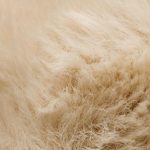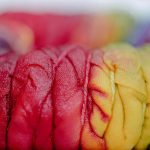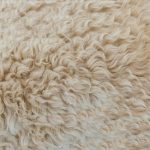Are you ready to learn how to fabricate your very own leather armor?
In this article, we will guide you through the step-by-step process, ensuring you have all the necessary tools and materials.
From choosing the right leather to adding reinforcements and fastenings, we’ve got you covered.
By the end of this guide, you’ll have a personalized and durable leather armor that is perfect for any cosplay or reenactment event.
Let’s get started!
Table of Contents
Choosing the Right Leather
When choosing the right leather, it’s important to consider factors such as durability and thickness. There are various leather types and tanning methods available, each with its own characteristics and benefits.
One common type of leather used for crafting leather armor is vegetable-tanned leather. This type of leather is tanned using natural materials such as tree barks, giving it a firm and rigid texture. It is known for its durability and ability to hold its shape well, making it suitable for armor that requires strength and protection.
Another popular leather type for armor making is chrome-tanned leather. This type of leather is tanned using chromium salts, which gives it a softer and more supple feel compared to vegetable-tanned leather. Chrome-tanned leather is known for its flexibility and resistance to water and heat, making it ideal for armor that requires mobility and comfort.
When selecting the thickness of the leather, it’s important to consider the level of protection needed. Thicker leather provides more resistance against impact and penetration, but it may also be heavier and less flexible. Thinner leather, on the other hand, offers better flexibility and lighter weight but may compromise on protection.
Measuring and Cutting the Leather
To measure and cut the leather, you’ll need a measuring tape and a sharp pair of scissors. It is important to have accurate measurements to ensure a proper fit for your leather armor.
Start by measuring the area where you plan to use the leather. Take note of the length and width needed.
When cutting the leather, make sure to use a sharp pair of scissors to get clean and precise cuts. Leather thickness is an important factor to consider when choosing the right leather for your armor. Thicker leather provides better protection and durability, while thinner leather offers more flexibility and comfort. However, it is essential to strike a balance between thickness and quality.
Leather quality is determined by factors such as the hide’s source, tanning process, and overall craftsmanship. Look for leather that is supple, smooth, and without any blemishes or defects. High-quality leather will ensure that your armor not only looks impressive but also stands the test of time.
Take your time to measure accurately and cut the leather with care to achieve the best results in your leather armor fabrication.
Creating Patterns and Templates
When it comes to creating patterns and templates for your leather armor, there are a few essential measuring techniques that you should keep in mind. Accurate measurements are crucial to ensure that your armor fits properly and provides the necessary protection.
Additionally, choosing suitable materials is important for both the functionality and aesthetics of your armor. It is essential to select materials that are durable, flexible, and suitable for the specific type of armor you are creating.
Essential Measuring Techniques
Start by accurately measuring your chest, waist, and hips to ensure the leather armour fits you perfectly. This step is crucial for achieving proper fitting and comfort. Here are some essential measuring techniques to follow:
- Use a flexible measuring tape to measure your chest circumference at the widest part.
- Measure your waist by placing the tape around your natural waistline, which is typically above your belly button.
- For the hips, measure around the fullest part of your hips, ensuring the tape is parallel to the floor.
Take note of these measurements and refer to a sizing chart specific to the leather armour pattern you are using. Consider the thickness of the leather you intend to use, as this will impact the fit and flexibility of the armour.
Choosing Suitable Materials
Choosing the right materials is essential for creating a well-fitting and comfortable piece of protective gear. When it comes to leather armor, the sourcing and preparation of the leather are crucial steps.
To begin, you need to carefully select the type of leather you want to use. Different animals produce different types of leather, each with its own unique properties. Common choices include cowhide, goatskin, and lambskin.
Once you have sourced your leather, it is important to properly prepare it before fabricating your armor. This involves cleaning the leather to remove any dirt or debris, as well as conditioning it to improve its durability and flexibility.
Assembling and Sewing the Pieces Together
When it comes to assembling and sewing the pieces of your leather armor together, there are several key points to consider.
Firstly, you need to understand the different stitching techniques that can be used to ensure durability and longevity.
Secondly, choosing the right thread types is crucial in order to match the strength and aesthetic requirements of your armor.
Lastly, it is important to know how to effectively secure closures, such as buckles or laces, to ensure that your armor stays in place during use.
Stitching Techniques for Durability
To make your leather armor more durable, try using a reinforced stitching technique. This will help ensure that your armor can withstand the rigors of battle and last for a long time. Here are a few tips to help you achieve this:
-
Needle selection: Different stitching techniques require different types of needles. Be sure to choose the right needle for the job to ensure proper stitching and durability.
-
Waxing thread: Waxing your thread before stitching can greatly increase its durability. The wax helps to strengthen the thread and prevent it from fraying or breaking.
-
Double stitching: Double stitching involves sewing two parallel lines of stitches close together. This technique adds extra strength and durability to the seams of your armor.
-
Backstitching: Backstitching involves sewing backward and then forward again to secure the stitches. This technique prevents the stitches from unraveling and adds extra durability to your armor.
-
Overlapping stitches: Overlapping stitches involve sewing over the previous stitch line, creating a strong and secure seam. This technique helps to prevent the stitches from coming undone and adds durability to your armor.
Choosing Suitable Thread Types
Using the correct thread type is important for ensuring the durability of your stitching. When it comes to choosing suitable thread types for your leather armor, there are two key considerations to keep in mind: thread color options and thread thickness.
For thread color options, it is important to select a thread that complements the color of your leather. This will help create a cohesive and visually appealing final product.
Additionally, consider the thread thickness. Thicker threads are generally more durable and provide stronger stitching, making them ideal for leather armor. However, thicker threads may also create bulkier seams. Therefore, it’s important to strike a balance between durability and aesthetics.
Securing Closures Effectively
Ensure that your closures are securely fastened to prevent any accidental openings. Here are some alternative closure options to consider for your leather armor:
- Buckles: These metal fasteners can be easily adjusted and provide a secure closure.
- Snaps: Snaps are quick and easy to use, but they may not be as durable as other options.
- Velcro: Velcro closures are convenient and adjustable, but they may not be as aesthetically pleasing as other closures.
- Laces: Lacing your armor provides a traditional and customizable closure option.
- Hooks and Eyes: These small metal hooks and eyes are discreet and provide a secure closure.
If you encounter any common closure issues, here are some troubleshooting tips:
- Check for loose threads or stitching that may be causing the closure to come undone.
- Ensure that the closure is properly aligned and engaged.
- Consider reinforcing the closure with additional stitching or adhesive if needed.
- Replace worn-out closures with new ones to maintain the integrity of your armor.
- Regularly clean and maintain your closures to prevent dirt and debris from affecting their functionality.
Adding Reinforcements and Fastenings
When adding reinforcements and fastenings to your leather armor, make sure you reinforce the vulnerable areas for maximum protection. A well-reinforced and securely fastened armor ensures that it stays intact even during intense combat situations. There are various reinforcing techniques and fastening options available that can enhance the durability and functionality of your leather armor.
To reinforce your armor, you can use techniques such as double stitching, adding additional layers of leather, or incorporating metal plates in strategic areas. These reinforcements provide extra strength and prevent the armor from tearing or breaking easily. Additionally, reinforcing vulnerable points like shoulders, elbows, and knees can significantly improve the overall durability of your armor.
When it comes to fastening options, there are several choices available. Here’s a table highlighting three popular fastening options for leather armor:
| Fastening Option | Description | Advantages |
|---|---|---|
| Buckles and Straps | Secure and adjustable | Easy to use, customizable fit |
| Laces and Tie-ups | Traditional and aesthetic | Versatile, allows for adjustments |
| Rivets and Snaps | Strong and durable | Quick and secure fastening |
Finishing and Customizing the Leather Armour
To personalize your leather armor, you can add unique embellishments and decorative elements that reflect your personal style and preferences. There are various options available to customize your leather armor, allowing you to create a one-of-a-kind piece that truly represents you.
Here are some ideas to consider:
-
Dying techniques: Experiment with different dying techniques to change the color of your leather armor. You can opt for traditional methods like vegetable tanning or explore modern techniques such as spray-on dyes or airbrushing. Choose colors that resonate with your personality and complement your overall aesthetic.
-
Embroidery: Add intricate designs and patterns to your leather armor through embroidery. This technique allows you to incorporate symbols, motifs, or even your initials into the armor, making it truly unique.
-
Studs and spikes: For a bold and edgy look, consider adding studs or spikes to your leather armor. These embellishments not only enhance the aesthetics but also provide an extra layer of protection.
-
Leather tooling: Explore the art of leather tooling to create beautiful raised designs on your armor. This technique involves carving or stamping designs onto the leather, adding texture and depth to the overall appearance.
-
Gemstones and crystals: For a touch of elegance, consider adding gemstones or crystals to your leather armor. These can be carefully embedded into the leather or attached using metal settings, creating a stunning and eye-catching effect.
Conclusion
In conclusion, fabricating leather armor requires careful consideration of the right leather, precise measurements, and skillful cutting. Creating patterns and templates ensures a proper fit, while assembling and sewing the pieces together form the foundation of the armor.
Adding reinforcements and fastenings enhances durability and functionality. Finally, finishing touches and customization give the leather armor a unique and personalized touch. By following these steps, you can create a high-quality and authentic leather armor that will provide both protection and style.
- Kevlar Wool Fabric: Blending Comfort With Protection - June 21, 2025
- Kevlar Vs Carbon Fiber: Pros and Cons for Composites - June 21, 2025
- Kevlar Vest Manufacturing: From Design to Production - June 21, 2025






